Written by Janet Schluter
Approved Provider / Director, KinderMarlee Landsborough. QLD
A place to be seen
What was the motivation for the practice change?
Coming in to LDC from FDC after buying a centre in Aug 2014, I was surprised to learn how the centre structured the children’s movements, experiences and groups. I had known that children had home rooms and particular educators but I hadn’t realized how rigid those were in a day to day sense and how organized the days were. It felt to me that the children were a product being ushered along the assembly line of “development” and “knowledge” with more consideration given to adult convenience, ideals and outcomes than the holistic support of each little person. Being reflective, it surprised me that the team I worked with, and many others that I spoke to, didn’t really question how and why things were being done. In my travels, conversations and research I couldn’t identify any evidence advocating structured approaches apart from loose links to programs designed to bridge scholastic/language gaps for highly disadvantaged or delayed children. I wondered why society as a whole was treating children as though they were all inherently incapacitated. I began to question who determines what is important to a child?
What were you hoping to achieve?
I wanted to create a place that children could really be themselves and could make sense of relationships and the world about them without being instructed as to how that would be. I imagined a service that supported children to be risk takers, creators and meaning makers with ownership of their own body, mind and spirit. A place where they could learn independent reason, personal capability, shared responsibility and express creatively. I was concerned that education in Australia seemed to be slipping further towards narrow, compliant thinking and learning “answers” rather than a space celebrating a deep curiosity; through sharing stories, possibilities and strategies. The dispositional development of the early years is well recognized and I wanted to prioritize this type of growth and share that importance with families. I observed how children are treated in community and I wanted to give children a place to be seen and heard; and to have their ideas and abilities truly central and honored.
What is your practice?
Good question. It’s easier to describe what it is not. At heart, KinderMarlee is a commitment to questioning why and how things are. The original physical space of the service was four rooms separated into babies, toddlers, pre-kindy and kindergarten. (I hate “pre” names – as though being in the year before kindergarten is somehow a time that is less important. It reinforces the drive behind “getting ready” or practicing to “be ahead”. It also devalues the work of educators with children under 3.) When I bought the centre I transitioned the rooms to four areas with specific functions. The Den is for quiet experiences, rest, reading, puzzles etc and also for group gatherings as it is fairly open and uncluttered.
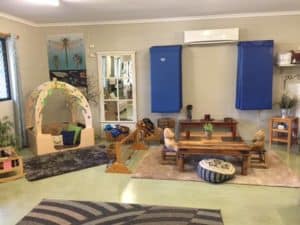
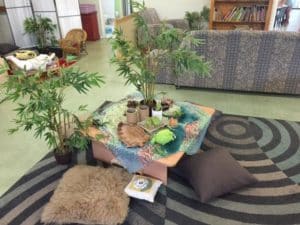
The Lab is for more hands on learning; science, experimentation, games, role play, design. The Café is where all the children’s belongings are stored, where they eat, cook and socialize. The Studio is where the children can source materials to build and create and to learn the skills of other languages like sculpture, paint and ink.
The outside area is called The Common and includes loose parts, sandpit, dirt mound, gardens and The Hob; our outside block building zone. All the children can use all the spaces according to what interests them, to the relationships they are forming and to the best of their ability. The practitioners in the areas are there to observe what the children say, do and feel so that we can collectively assess how our role, interactions, provision and beliefs either support or hinder the children’s experience. The Café is “open” for three blocks of 1.5 to 2 hours when children can freely access their lunchboxes and eat at their leisure. In between these meal blocks, the Café might host a cooking experience for any children that wish to join in. The Den becomes a restful zone after around 11am when our littlest people begin to get tired. As children recognize their need to rest or sleep, they get their blankets and move into the darkened Den to lay down and re-centre. (Younger toddlers are supported with meals and bedding). We have two Bachelor teachers who facilitate the QKLG supported program through enquiry based learning designed around KinderMarlee’s core values of Connect, Contribute, Create. Other children are able to join in these designed experiences and we have strong underpinning beliefs around the importance of mixed ages and peer teaching.
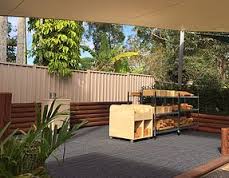 Reflection on your practice…
Reflection on your practice…
As children arrive they go straight in to the Café with their parent to unpack their belongings and place their lunch in the fridge. They might settle at an “invitation to play” that has been created by a practitioner (for example, animals in the sandpit, or clay balls on a table with tools and a mirror stand) as they prepare for their parent to leave. Most often, they see a friend and run off to do things of their own devising. The day is slow paced and time is not a pressure point, practitioners facilitate different areas (like the sandpit/mud kitchen area) or host an experience (like belly dancing, or sitting to read with puppets); other educators assist children as needed with wellbeing tasks like changing a nappy or helping a younger child with a meal. The team move about the space, observing play and assessing what/when/how they might enhance what is happening.
Often, the best thing to do is to let the children plan, source and orchestrate their own ideas.
The foundation of strong executive functioning is born here through children making decisions, planning/resourcing, conversing and negotiating roles, regulating what is happening physically/emotionally and moving flexibly through different social situations and circumstances.
It looks like children running about and playing; we are here to protect and amplify their time as children, their emerging identity and the significance of their own knowledge base. We are not here to enforce rules that make educator lives easier or to prioritize one type of knowledge, way or answer over another.
There are so many years of that to come, the best thing that we can do here and now is focus on supporting children to develop a flexible mindset (hard in a structured, adult provided routine), think critically (very hard when adults only ask questions with definitive answers like two, green or circle) and to be personally secure with positive dispositions (even harder when the majority of events, relationships and resources are adult enforced).
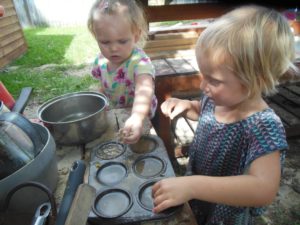
The teachers invite children to join them for some “kindy time” and discuss previous concepts with new possibilities for (eg “remember exploring cooperation this week, how can we change the rules of this game today to make it more “cooperative?”), children of all ages can join in if they would like and their participation is observed by the teachers. If they contribute well, or at least don’t distract, they are welcome… if they are not yet able to do this, another educator might redirect or invite elsewhere. We are open to the learning behind even these distractions and are careful to evaluate if the little one is actually hindering the experience, or are they only hindering the adults preconceived idea of how that experience should look?
Older children are generally very tolerant and open to little people’s efforts and we see many examples of older children making space, explaining things and slowing down to incorporate younger participation. More often than not, a younger person’s presence only hinders the adult agenda to get something done in a certain way by a certain time. Children don’t have this pressing limitation until they learn it from us and a valuable lesson can be one of patience, allowance and guidance. Isn’t that more important than a lesson of “he’s so annoying because he can’t do this” or “only certain children are welcome there”?
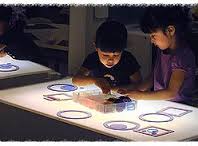
The day continues with an open and easy flow, children eat and rest as needed. They move and play with whom and where they decide. There are also boundaries to learn in a community, so practitioners are there to mediate thoughtful use of resources, caring for the space and taking care of ourselves and each other. There is only one rule arbitrary to the children, they are not to open the door to the foyer.
There seems to be a paradigm shift occurring in EC, practitioners rush to fill every moment, to respond immediately to “children’s interests” and to “scaffold” by quickly adding more props or products for each child. Every sentence and activity has to be saturated with “learning outcomes”. Children seem to be losing comfort with waiting, being patient, building anticipation; and with not being the centre of the universe. At KinderMarlee we see the individual child as one part of the bigger community. There are sometimes sacrifices to be made, and there are often things to be shared or are unavailable. Children are anticipated to be capable, resourceful and considerate. This is reflected in our documentation which aims to focus on educator pedagogy and not on writing stories about each child’s activities. The educators aim to document how and what the children bring to the learning community, ie what strategies do they devise, where did this lead them, what does it mean to us? We want to shift parents thinking away from “what about my child” to one of seeing the learning community as a whole. The rise of outcome driven, online parent portals are adding to this unhealthy perception – not to mention the mixed message of promoting “let’s get kids off screens” on a screen. 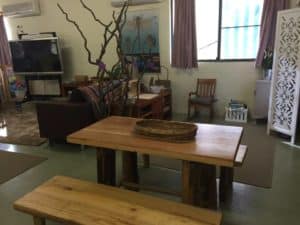
We also move away from experiences that promote children as producers or consumers in our efforts to resist the pushdown from school curriculum and commercial interests, so we carefully think about responses to concepts like ANZAC day and Easter, Valentine’s Day etc… what do these really mean when you are two or three or four? What messages underpin what we share with children? Buy this, put it together, look at it for a minute, put it in the bin? We try to celebrate the relationship of these things (if at all), on Mother’s Day parents might share a cup of tea with their child and a café made scone, take a moment together, appreciate the day. We believe this shows children as memory makers, with emotional insight and generosity – so much more than a cutesy, glittered handprint-card made mostly by a time hurried adult who has twenty others to finish.
At KM the overarching questions are always “What does this mean to me? Why do I think this way? How might it be different? What is most important?” and so the methodology is not static, it ebbs and flows as the children and families change and as we interpret emerging social trends. KinderMarlee means to think for and with children, not for business, not for assessors and maybe not even for parents sometimes. We consider, what if our centre is the only place this child can just “be”? We reflect, what big goals for the future are helped by this small action today?
What were your successes and challenges?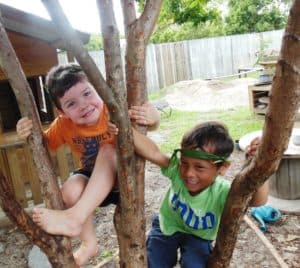
The biggest success is providing a real place for children to do what is in their DNA – make sense of themselves and the world through play.
The biggest challenge is being different to mainstream McABC’s that inform most people’s ideas of early education and care.
It still surprises me sometimes how strongly the team feels about the benefits of our work for children. When we have doubts I offer “Should we just go back to the old way?” and the team are certain that even if we don’t have the best way forward yet, the worst way would be to return to the past.
At the same time, we constantly struggle to balance many influences – parents, society, finance, regulatory, education and so on. We are often confronted by suggestions introduced though avenues like a vocal parent who is tired of dirty clothes, or a draining visit by an officer wanting a thorough explanation of why a corner space near the shed isn’t fenced off to children, or a prep teacher encouraging children to wear their shoes all day and chant mat time games, or a local competitor advertising “foreign language lessons” and “school readiness programs” to impress parents. (I’m not against either of those things for their own sake, but when used for marketing purposes to reinforce and capitalize on parent fears.) But the one constant for us is “Would this proposed change be better for the children?” Mostly it’s not.
So one of our biggest but least visible successes is that there is now another team of practitioners out there who are actively, thoughtfully and persistently taking risks for the sake of children. We lost a lot of families initially, and it is often difficult to enroll a new parent comparing our method for the more desirable “structured and school like” program up the road, complete with online personal reports and “safe age groups in catalogue rooms”. Another benefit has been personal and professional growth for the educators. You can’t work this way without unpacking who you are; your own beliefs, strengths and doubts – growing more comfortable with uncertainty and a confidence in your resilience and contribution. Pedagogy is the marriage of self and other, the building of shared understanding, the acknowledgment of different views and the opening of new possibilities. Pedagogy is not about enclosing children in a compound and doing things to them, as Peter Moss would say. Amen!
The challenges are many, varied and ongoing. It is both a challenge and a success to face each one and step forward. Often we have to retrace our thinking and try a different approach. Often we have to compromise in order to support others in making sense of what we are doing, before taking yet another step. Often we have to learn a little more and let a little go. Often we have to agree to disagree.
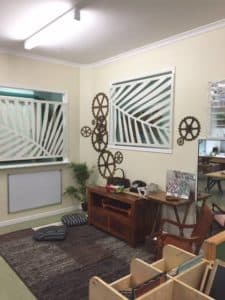
Where to now?
It can be hard to unwrap broad concepts when people are content with “but the children are busy and the parents are happy”. It’s not that more traditional centre practices are inherently bad – I often have debates with colleagues from other services who feel equally passionate about children learning to write their name or follow instructions without question, or eat/sleep at the same time. My own priorities sometimes change and of course I don’t know what I don’t know.
Our belief is centred on questioning what is fundamentally important for healthy human development in under-fives – and making sure the answer is not based on assumption, convenience and social norms – or the agenda of next year. As always we plan our approach, we evaluate our contribution to children and we work to understand more deeply. If it just so happens that along the way we disrupt thinking and confront assumptions then that is just gravy.
So where to now? Only the wind knows.

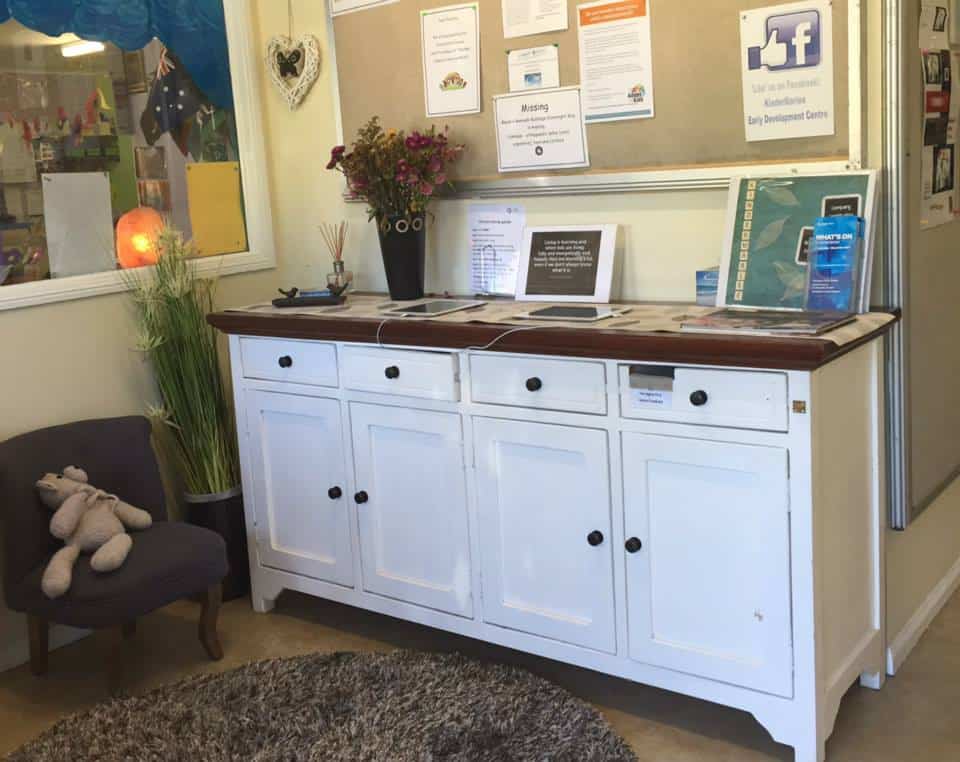
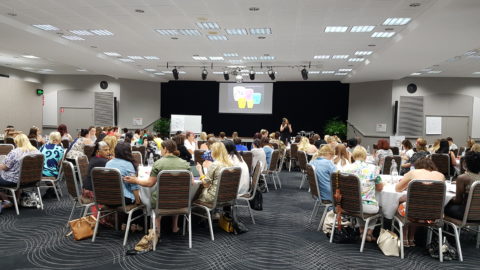

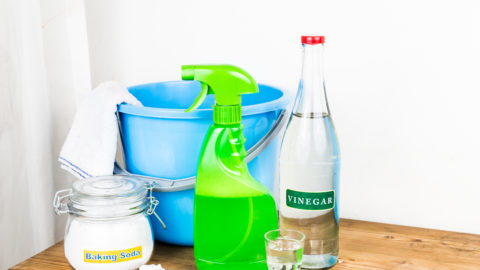
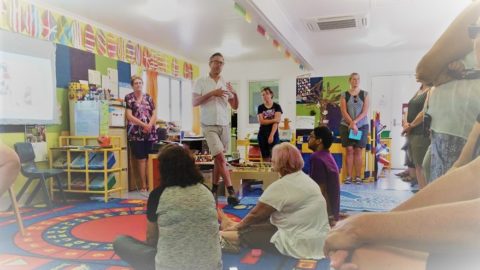
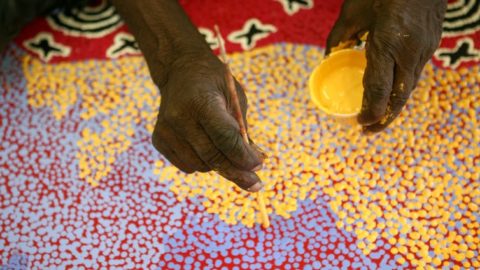
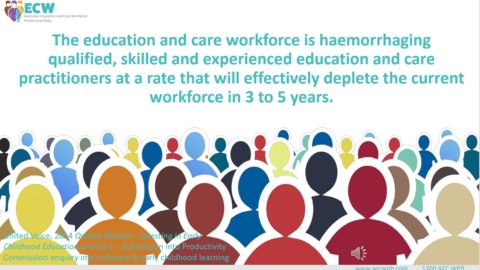
Well said Janet!
This is so heartwarming to know that there are educators out there that are not afraid to respond enthusiastically to children’s needs It so hard when you know that you want to just be in the moment with children but the pressure is on to take photos document and make your linkages to outcomes and theorists . After 28 years in child care I knew I was losing sight of how to have fun with the children All eyes would be on you if you were just sitting in a space chatting with the children and you should have been up SUPERVISING all the children I know there is this great fear that children might hurt themselves and centres be sued and that the regulations insist that that you pace up and down all over the playground to make sure all children are looked after But sometimes just sitting in th garden and interacting with children’s is more beneficial When I used to let my 2year children in my room eat when they wanted there were horrified looks as everyone was afraid of them not being supervised I know that there was a lot of anxiety in the other educators when some if the children didn’t sleep and I used to just let them do quite activities This of course was because we had to fit in staff lunches and it all came down to money by not having to employ more staff to cover lunches Documentation was ridiculous Even though I was compentant at it and as educational Leader assisted others I did empathise with those that struggled and felt defeated It was sad as they were amazing educators in so many ways but were often judged on their ability to pound out a whole lot of long Learning stories and be real clever and make their linkages I used to often think wouldn’t be better if educators were just encouraged to use their own interests and skills in looking after the children The things they felt comfortable and compentant in doing How wonderful would that be for the children it certainly be taking individuality to a different level Child care centres have to be so competive now and focus too much on getting that gold star of exceeding to
prive to the community that they are worthy of being caring fun loving educators to look after there children I hope that more centres can be brave like you and make some adjustments Maybe one day I will put pen to paper and write up some articles to encourage educators to just BE
Thank you for taking the time to respond. You are not alone many educators are struggling with practices that are not facilitating or supporting quality relationships and outcomes for children. It is sad that may providers miss the opportunity to turn this around and would in turn realise that the quality practices and relationships would bring them much more (reputable image, continuity in staff, greater productivity, improved outcomes for children and staff, increased occupancy and greater financial viability) than the Gold Star. If you ever decide to put pen to paper our sector needs all of us to stand together to support each other to grow in skill and confidence so that collectively we can increase our professional voice and begin to have a much greater impact on practices.
Hi Karen,
What a joy it was to visit your Service last year with Deborah and the group in May.
We have begun our own journey into a similar structure and now have an art studio, cafe, and science/ construction room. Our journey continues and more changes are planned along the way. Fawn from Granny Glasgow Ducation and Care Carnarvon,